Best dog brushes 2025: Tail-wagging tools for a pristine pup
The best brushes for dogs will help you get tough on tangles while ensuring you keep a dog’s coat fresh and healthy
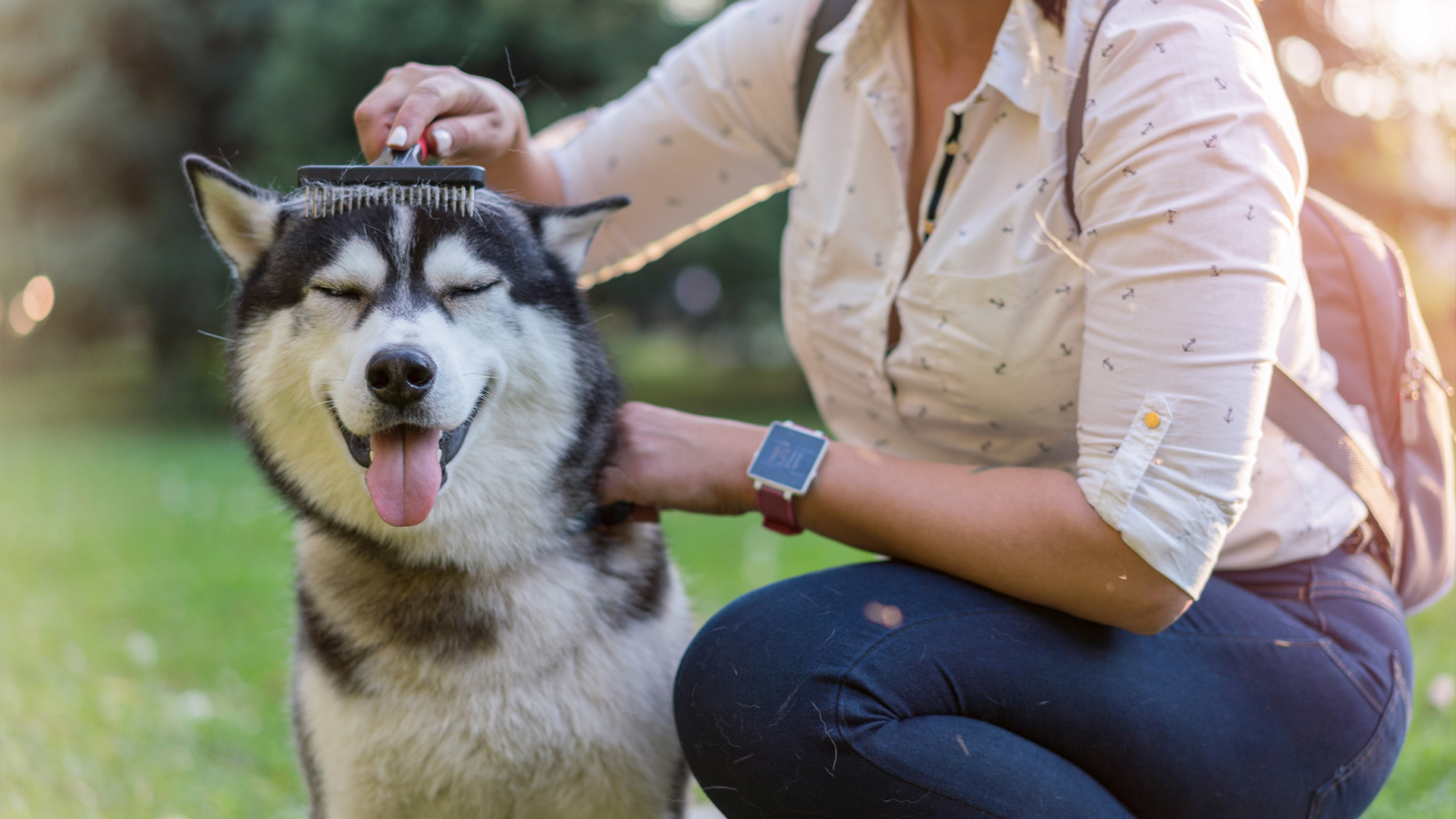
If you’re looking for one of the best dog brushes, we can safely assume that you want your dog to look and feel great. After all, a good brush will ensure your canine companion’s coat continues to look glossy and well-groomed. Grooming also helps to stimulate blood flow and prevent all manner of health conditions, such as tangling and matting, which can lead to bacteria growth, skin infections, tears and parasites.
But while a good brush is one of the most important items in the best dog grooming kit, selecting one isn’t as easy as you may think. For starters, there are five types of dog brushes so understanding your pet’s coat is important.
“Thick long coats, tight curly coats, and sleek short coats all have different brushing needs so you’ll need to choose your dog brush accordingly,” affirms expert vet Dr Rebecca MacMillan.
Here, then, we address some of those issues, explaining the suitability of the different brush types while stressing the need to consider your dog's breed, coat length and type. We also suggest specific products that will best suit your various needs thereby preventing you from becoming overwhelmed. With all of that in mind, let’s take a look at the best brushes for dogs on the market today.
The best dog brushes we recommend in 2025
Why you can trust PetsRadar
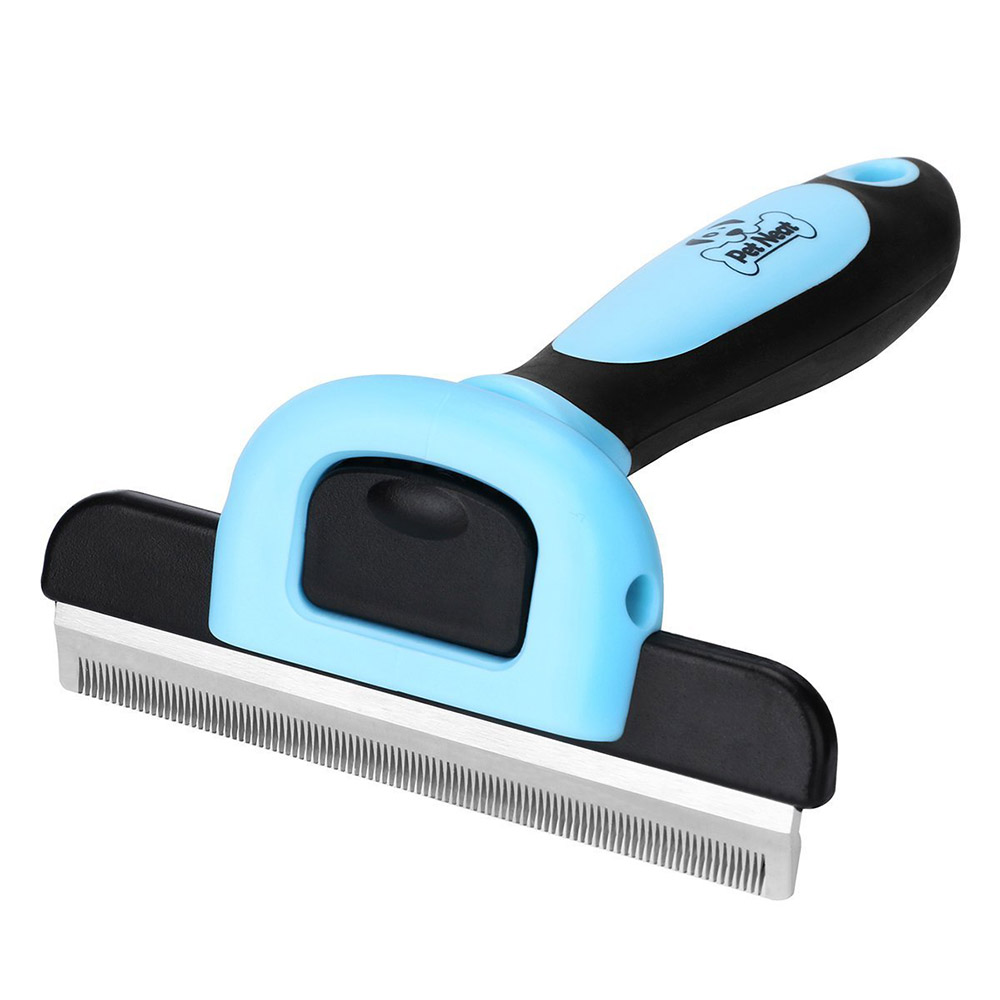
Best overall dog brush
Designed to thin out your dog’s thick coat, this brush works well at getting rid of excess hair – perfect if your dog is particularly prone to shedding. It has a stainless-steel comb and a covered-up blade that gently works across your dog’s coat. It also has an easy-grip handle that allows you to glide the brush easily over the skin (as long as your dog doesn’t wriggle too much).
By removing as much as 95% of dead hair in under 10 minutes, this nice, comfortable brush will leave your pet looking smooth and silky and it’s likely your dog will even enjoy the experience.
Reasons to buy: Suitable for all hair types, it’s very effective and comes with a safety blade.
Reasons to avoid: It is not as effective on super thick or long hair.
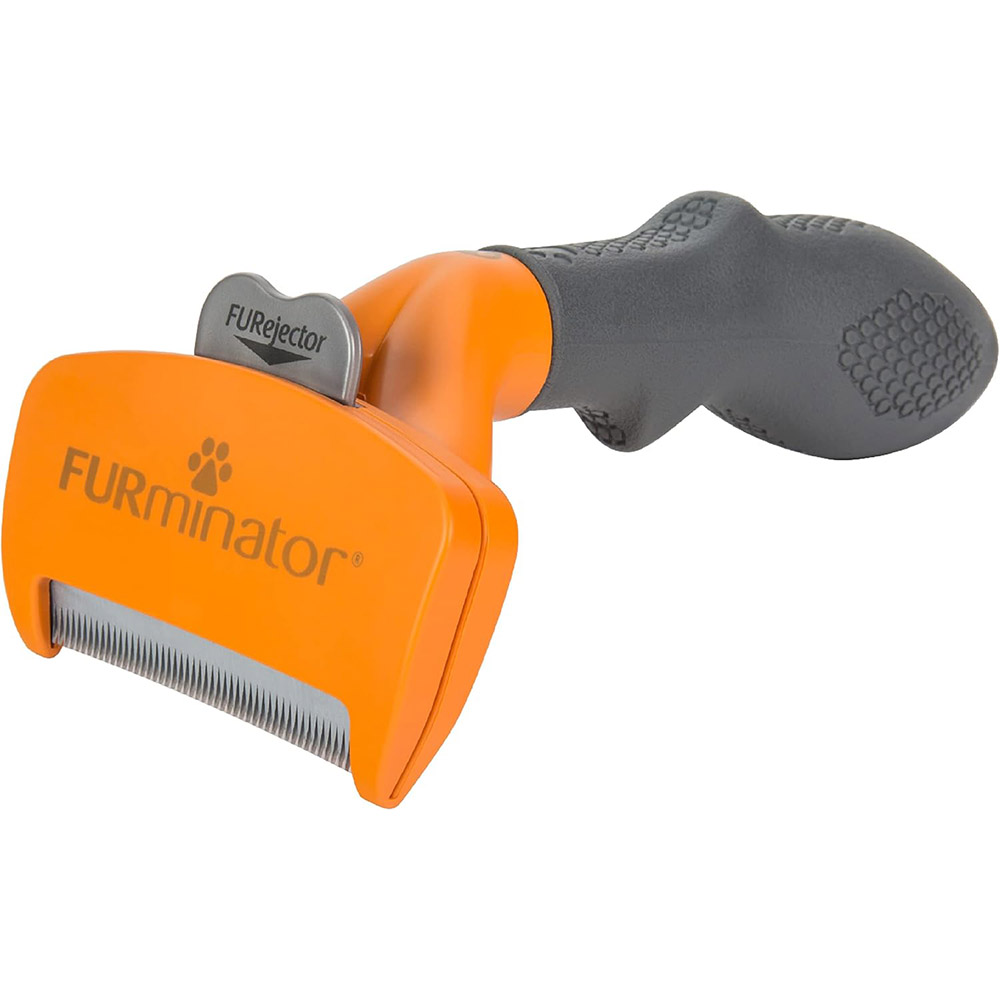
Best dog brush for shedding
The Furminator dog shedding tools are available to suit all sizes of dog as well as different hair types. They are designed to feel comfortable in your hand with an ergonomic, gripped handle, but also come with multiple protections to ensure brushing is comfortable for your dog.
A skin guard prevents the brush from dragging along your dog’s body, while the curved edge means it will glide nicely, conforming to your pet’s natural build and shape. To help make light work of a brushing session, there’s also a hair release button so you can keep going for longer without taking unnecessarily longer breaks to remove clogging.
To ensure you’re using it optimally, you simply need to move it up to brush and down to remove fur and the end result should be a dog who looks in tip-top shape.
Reasons to buy: It’s perfect for shedding dogs, ensuring excess fur is removed.
Reasons to avoid: More of a deshedding tool than a brush, per se, and it’s a little more expensive than most.
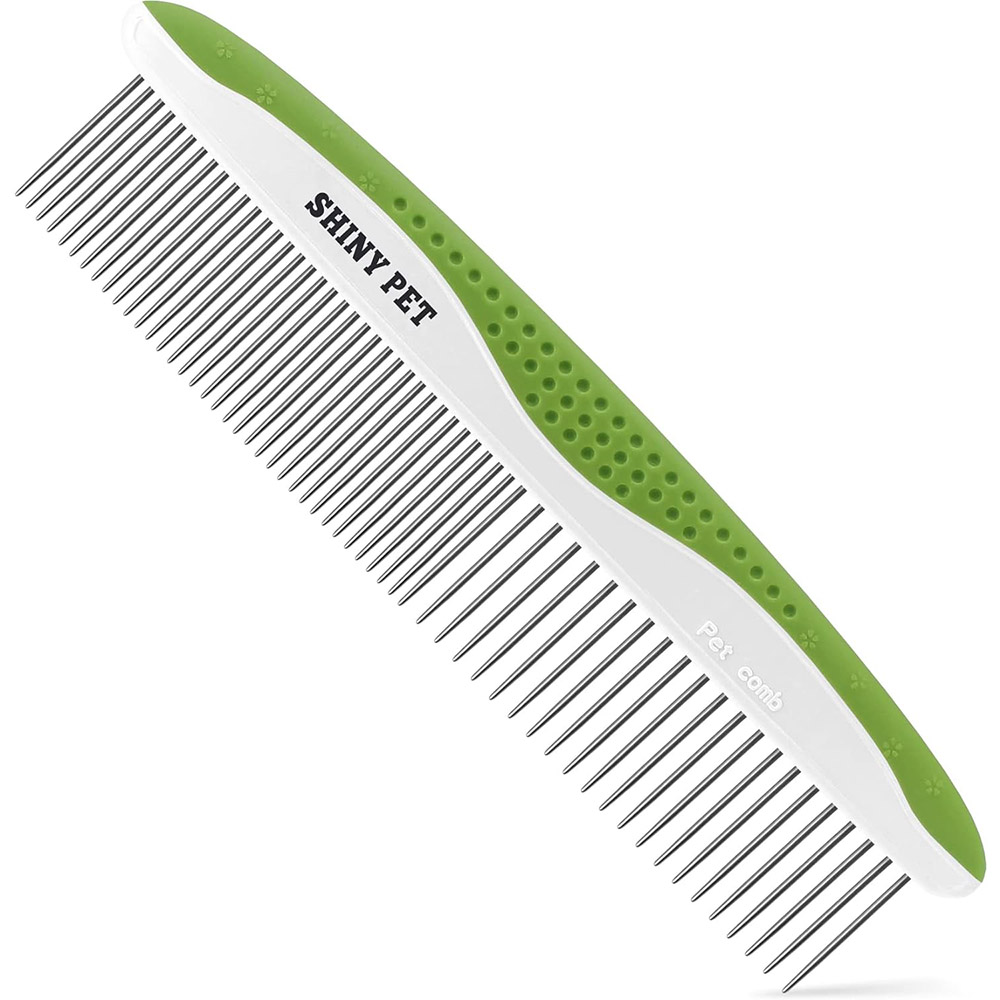
Best dog brush for matted hair
This style of dog brush works on much finer, longer dog hair but it gently removes any tangles in your dog’s fur, breaking up knots, and tackling matts while getting rid of any dirt or debris in the coat. Its gentle teeth with rounded ends will remove loose hair without you needing to tug too hard. The comb won't pull on the hair or skin, either, which makes it gentle and comfortable for your pooch.
As such, you’ll likely reach for this comb to deal with tougher knots and you can use it to target particularly stubborn areas (although regular use should head-off such problems before they start). You should find its slip-resistant ergonomic handle is comfortable to use and that it’s well suited to larger breeds of dog (although it’ll work on any size – even on cats!). As a bonus, to ensure you’re brushing correctly, this product comes with a DIY guide to grooming your dog as well.
Reasons to buy: It has anti-scratch teeth, an ergonomic handle and it’ll massage the skin too.
Reasons to avoid: It’s not as effective on shorter hair.
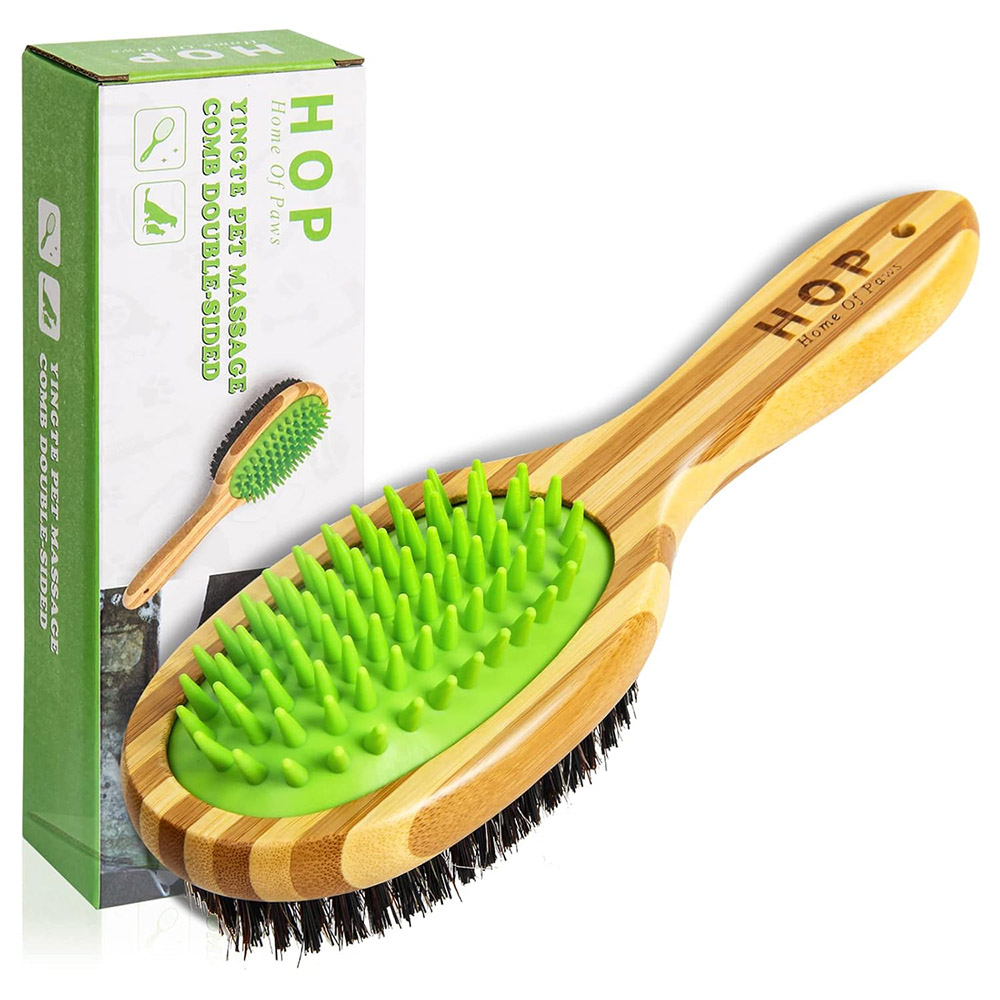
Best for short hair
Bristle brushes are great for dogs with short hair or double-coated fur and this particular product by Home of Paws is a fine example of how effective they are. It has soft bristles that work well across sensitive skin – you could pass this over the face or across the belly and it won’t scratch or irritate. As you do this, you’ll be removing loose hair, dust and dirt. You can then flip the brush over and use the equally soft silicone head to gently massage the skin.
Capable of being used wet or dry, it’s a wonderful brush to have around. Combine it with shampoo or conditioner and you should be able to keep your pup’s hair feeling silky smooth and free of excess dead hair. It’s a great way to achieve something of a salon finish while making brushing sessions feel entirely pleasurable.
Reasons to buy: This two-sided brush will effectively tackle a dog’s short hair or double coat.
Reasons to avoid: Bristle brushes do not work as well if you have a long-haired dog.
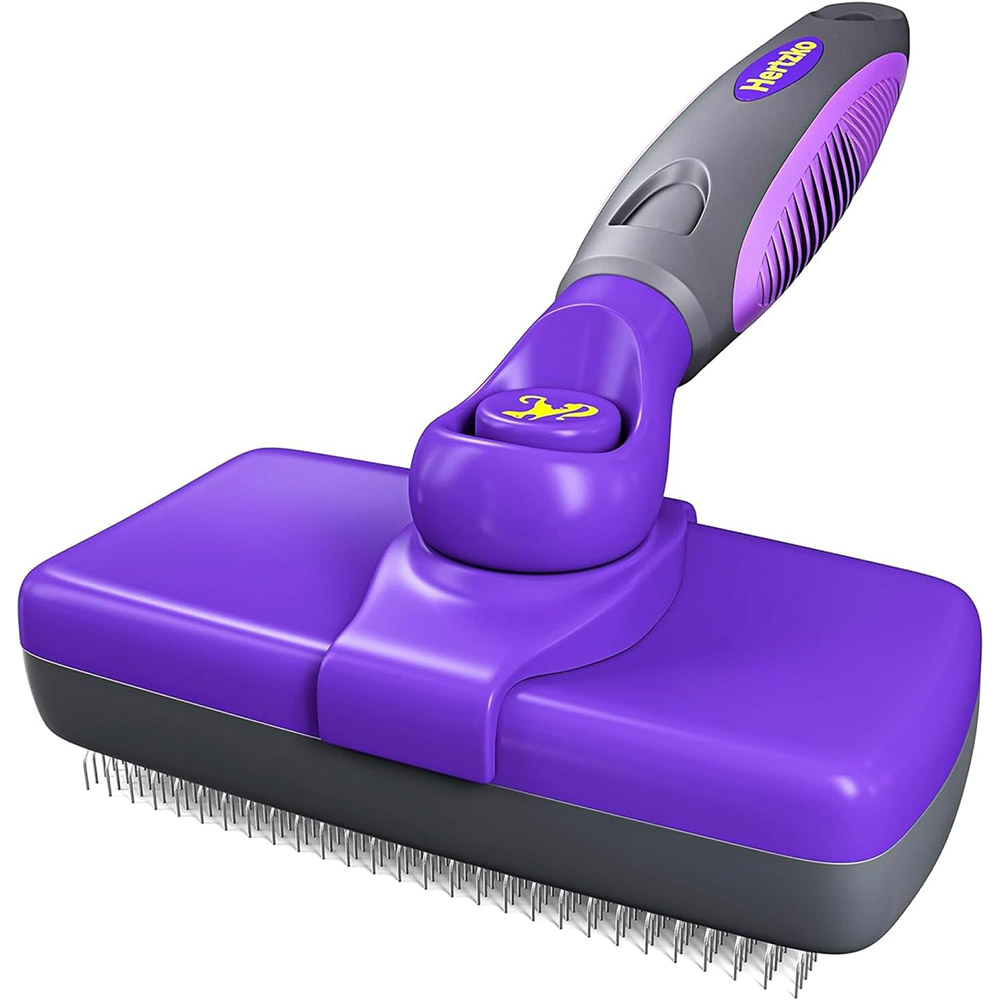
Best dog brush for long hair
Whether you're wanting to remove loose hair, dirt and dander or eliminate tangles and knots, the fine wire bristles of this slicker brush will penetrate deep into your dog's fur, grooming both the top and undercoats beautifully while still being gentle enough not to scratch your dog's skin. The bristles are also designed to massage while you brush, stimulating blood flow and natural oils to leave your pet's coat soft and shiny.
Effective on long haired dogs (but also fine to use on shorter-haired breeds), you can’t really wrong with this product. And since this strong and durable slicker brush has a comfort-grip and anti-slip handle, it will also help to prevents hand and wrist strain so you can continue grooming for longer. What’s more, it’s incredibly easy to clean. Simply click the button to retract the bristles back into the brush after use and the hair comes loose for easy removal.
Reasons to buy: Gentle yet effective, this brush has a durable design and it is easy to use.
Reasons to avoid: It can be a little abrasive on the fur.
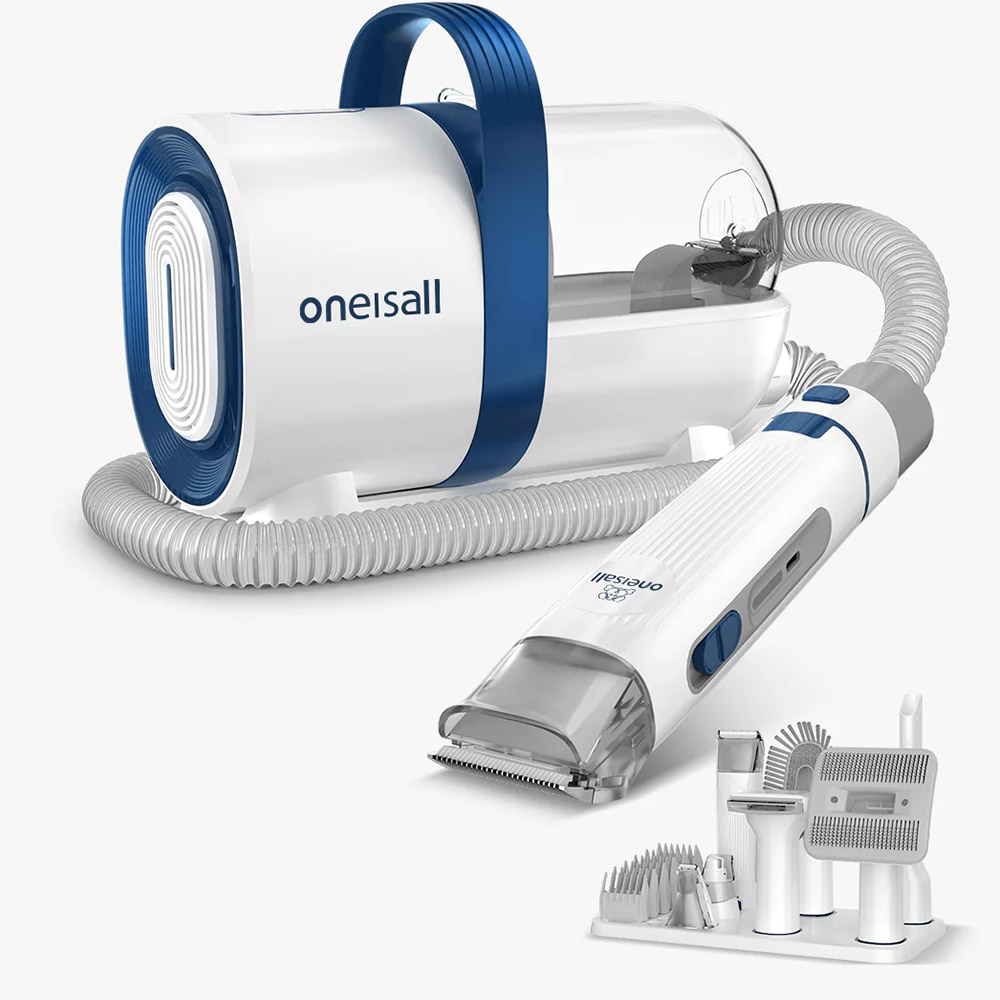
Best dog brush with vacuum
Since you’re likely to be removing a good amount of loose hair from your dog when brushing, you’re sure to find the process rather messy. And while you can use brushes that quickly release removed hair at the touch of a button, you are still going to get fur floating around the home. Often you’ll need to get handy with a vacuum cleaner afterwards.
But if you buy a dog brush with a vacuum attached, you can effectively do two jobs at once. That is what this product offers. You can use a brush that will vacuum up 99% of hair as you brush and since it operates at just 60db, it shouldn’t be annoying for you or frightening for your dog. You get a grooming brush with this set that promises to make hair shiny and smooth as well as a cleaning attachment to remove any bits on your carpets or clothes. It also includes detachable clippers and nail grinder, so you’re all set with a pretty complete grooming kit.
Reasons to buy: Quiet yet with a good suction, this vacuum is great at removing loose hair from the undercoat.
Reasons to avoid: It’s particularly designed for big shedders and dogs with thick double coats.
How we chose the best dog brushes
Although different brushes are aimed at different breeds and coat length, we primarily looked, in general, at how effective each one would be on their intended dog. To that end, we were looking at how well a brush would be able to remove excess hair and tackle shedding and how well it could tackle important problems such as matting and knots.
We also looked at how often a brush is likely to be used: brush daily or twice-weekly and we reckon you’d want the tool to have an ergonomic design and easy-grip handle to make life a lot more comfortable for you.
Why do I need to brush my dog?
Even if your dog has very short hair, it’s still advised to run a brush over it.
“Dog brushes allow you to keep your dog’s coat looking its best,” says expert vet Dr Rebecca MacMillan. “Regular grooming stops tangles from turning into unmanageable, painful mats. It also removes dead fur, which not only makes your dog’s coat look healthier but also stops so much loose hair in your home. This not only keeps your home tidier but can also be a big help for asthma or allergy sufferers.”
What brush will be best for my dog?
The answer to this depends on the type of hair your dog has and any problems it may face. For example, tackling matting and knots is best carried out using a comb or teezer brush unless you’re looking to penetrate deep down into thick and double coats, in which case a rake brush is best.
Dogs with very silky coats will benefit from a pin brush. Their easy-gliding, spaced out bristles and protective balls on the end to prevent scratching do a great job of stimulating and distributing the natural oils in the coat and add a nice shine.
Pin brushes aren’t suitable for dogs with long hair or very thick coats (like the German Shepherd), however. For these, opt for a slicker brush as they penetrate deep into the coat and do a wonderful job of removing loose hair, as well as loosening knots and tangles.
Slicker brushes are brilliant if you have a heavy shedder because they collect all the dead hair. You can then simply click the release button and have it empty itself into the trash.
How often will I need to brush my dog?
How often you should brush your dog will depend on your dog’s fur type.
“Short coats may only need brushing once a week, whereas some long-coated dogs will need daily brushing,” Dr MacMillan says. Lifestyle will also play a part. If your dog is getting dirty or potentially coming into contact with parasites, then they’ll need more regular brushing.
How to introduce grooming
Brushing should always be a positive experience for your dog.
“If they are not used to being brushed, you will need to introduce the idea gradually, by taking baby steps and offering treats and praise,” says Dr MacMillan. “It’s also possible to groom your dog when their fur is wet or dry. When wet, it may be easier to tease out knots, but brushing can be gentler for your dog when their fur is dry so it is generally preferable.”
Here’s some more advice on how to groom a dog.
Should I still brush a nervous dog?
It’s worth considering a grooming glove (like this one on Amazon) rather than a brush.
“This fits on your hand and makes it seem like you are stroking your dog rather than bushing them,” Dr MacMillan says. By keeping initial grooming sessions short and praising your pet throughout, you should find that they begin to come around to the idea. “Through positive reinforcement training, you may gradually be able to introduce alternative brushes over time.”
Here’s some more advice on how to brush a dog that hates being brushed.
Still not sure where to start? We got some dog grooming tips from a vet. Or, learn how to get dog hair off your couch and how to remove dog hair from your washing machine

Rebecca is a veterinary surgeon who graduated in 2009 from the Royal Veterinary College in London. She has a wealth of experience in first opinion small animal practice, having done a mixture of day-to-day routine work, on-call emergency duties and managerial roles over the years. She enjoys medicine in particular and she is proud to have recently achieved a BSAVA postgraduate certificate in small animal medicine (with commendation). She writes on various feline and canine topics, including behavior, nutrition, and health. Outside of work and writing she enjoys walking her own dog, spending time with her young family and baking!
Get the best advice, tips and top tech for your beloved Pets

David Crookes has been a journalist for almost 30 years and he has written for a host of magazines, newspapers, websites and books including the World of Animals Annual, BBC Earth, Live Science, The Independent and Tom’s Guide.
Born in England, he lives with two cats but he’s also keenly interested in the differences between the huge number of dog breeds – in fact, you can read many of his breed guides that he’s written in collaboration with vets here on PetsRadar.
With a lifelong passion for technology, too, he’s always on the lookout for useful devices that will allow people to keep their pets happier and healthier, and provide them more time to spend together.
David has a degree from Durham University, as well as postgraduate diploma in journalism from the University of Central Lancashire.
